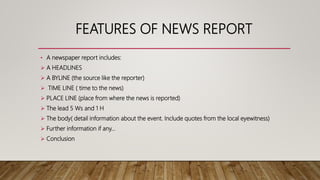Identifying Key Elements Key elements in a headline include the event itself, its scope, and its stakeholders. For instance, if the headline reports a new policy, the key elements are the policy details, who it affects, and the intended outcomes. By identifying these components, we can better understand the primary effects and their significance.
The Immediate Impact of the Event Short-Term Reactions Events often trigger immediate reactions that can range from public outcry to jubilation. These short-term responses are crucial for gauging initial public sentiment and understanding the immediate effects. For example, if an event led to a sudden increase in protests or celebrations, these reactions can offer a snapshot of the event’s immediate impact.
Public and Media Response The media plays a significant role in shaping public perception. An event’s coverage can amplify its impact or cast it in a different light. Analyzing how various media outlets report on the event helps us understand the public’s reaction and the narrative being constructed.
Long-Term Effects Economic Impact Long-term effects often include economic shifts. For instance, if an event leads to changes in trade policies, the economic impact might be reflected in market fluctuations, job creation, or losses. Evaluating these economic indicators helps us grasp how the www.idahoreports.com shapes economic landscapes over time.
Social and Cultural Consequences Events can also instigate social and cultural changes. This might include shifts in public behavior, attitudes, or even cultural norms. For example, a significant event might influence how communities interact or how cultural practices evolve.
Changes in Public Policy An event can prompt changes in public policy. Governments may introduce new laws or amend existing ones in response to the event’s fallout. This policy shift is a direct reflection of how the event is perceived and the measures taken to address its consequences.
Shifts in Social Norms Similarly, social norms can shift in response to significant events. These shifts often reflect deeper changes in societal values or priorities. For example, an event highlighting social injustice might lead to a stronger emphasis on equality and fairness.
Case Studies: Historical Perspectives Comparison with Similar Events Looking at similar events from history can provide valuable insights. By comparing past and present events, we can identify patterns and understand how historical context influences the effects of an event.
Lessons Learned Every event offers lessons. Reflecting on these lessons helps in preparing for future occurrences. Analyzing past events allows us to apply these lessons to current situations, enhancing our response strategies.
Expert Opinions and Analysis Insights from Industry Experts Industry experts often provide in-depth analysis and predictions about the long-term effects of an event. Their insights are based on data, trends, and professional experience, offering a nuanced understanding of the event’s impact.
Academic Perspectives Academics contribute theoretical and empirical perspectives. Their analysis can reveal underlying causes and potential future developments. Engaging with academic work helps in framing the event within a broader scholarly context.
Concluding Thoughts Summary of Main Effects In summary, understanding the main effect of an event involves examining immediate reactions, long-term consequences, and historical comparisons. By synthesizing these elements, we gain a comprehensive view of the event’s impact.
Future Implications Considering the future implications of an event is crucial for anticipating its ongoing effects. Whether it’s policy changes, economic shifts, or social transformations, looking ahead helps in preparing for and adapting to new developments.

